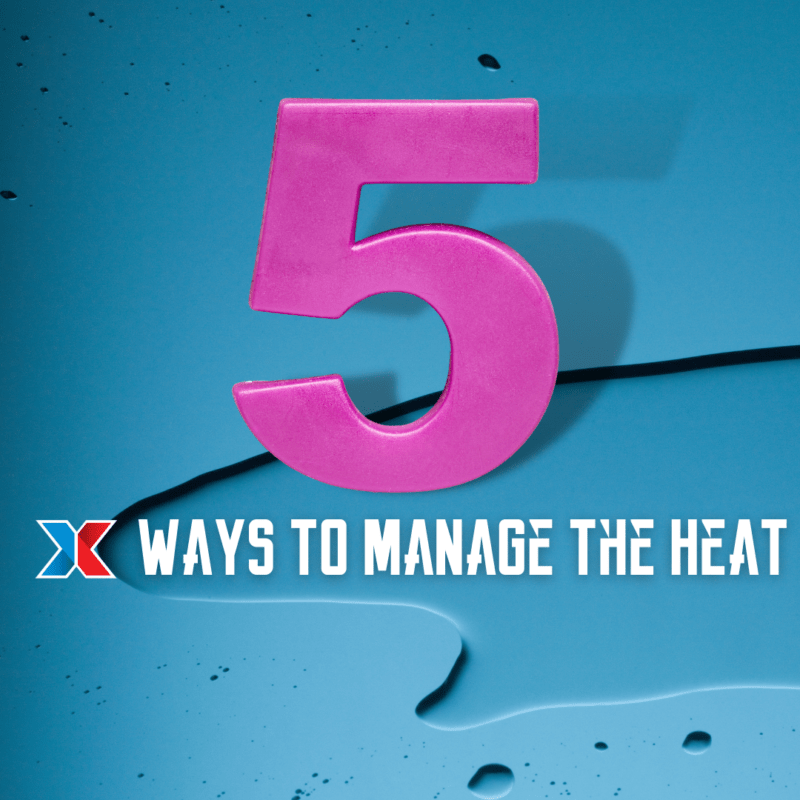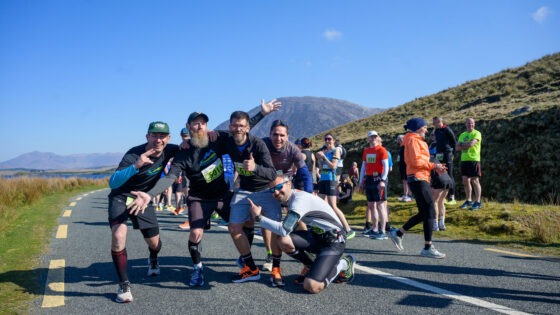
Troubleshooting the heat is a game most endurance athletes play. But what do you do when you’ve already crossed that line? When you’re already in a bad spot?
This is a really tough concept for many athletes to wrestle with, particularly if you haven’t been there before.
We have to have a better framework for understanding how to undo some of the damage that’s been done when crossing the line on a hot day. We all make mistakes, especially when we’re competing.
Prefer the Podcast Version? Tune in here.
First, we have to have nutritional flexibility.
You have a plan, you have food, you went shopping, you’ve been training, you’re prepared and you’re ready to move forward. And yet, here you are in this tough heart rate situation.
It’s time to eat something to get calories in from solid food. That’s probably going to be a hard pass.
As you’re trying to recover from the heat, your body needs fluids. And fluids are actually significantly easier for your stomach to process.
If you put some solid food into your gut when your body’s already under that stress from having crossed that line, the odds of you being able to process it and put it to use are very low.
As a result, your body will need to move more water to the gut to help digest the food, taking it away from other areas that need it, such as the surface of your skin.
If you do happen to go over that edge, you need to make sure that you are getting the fluids in.
The second thing we want to talk about is staying wet.
Feeling hot (your skin) is different than being hot (your core temperature). The reason for getting wet is to amplify or replace the effect of sweat. This has the effect of keeping your core body temperature down. The more we can reduce the early impact of heat, the greater our chances are of being able to race to our potential.
The key here is the motion of the air across the surface of the body. If you’re going super slow, for example, you don’t necessarily have that flow of air on a hot day. And you won’t reap the same cooling benefits.
Of course, you want to be mindful of where that water goes as that could become a problem. Running and water don’t mix well, as your feet can get chewed up or even blisters.
You don’t want to actually spray or dump water on your feet, but you do want to get it under your head, on your torso, and on your back. And if you can, on your femoral arteries (just inside the groin area of your legs, running down towards your knee).
These are the key areas that will help you to stay cool while making the most of the opportunity to access some of those fluids.
The third item is external salt.
If you have to take in extra fluids — regardless of its water or sports drink — you will need to will need extra salt to help process the fluid in your stomach.
Salt acts as a conductor, helping fluids move more quickly through your body.
We generally recommend a total of 1000 milligrams across all sources in an hour while racing, give or take your size. So 750 is almost an hour’s worth of sodium. Remember the sodium isn’t just in this case, replacing what you’ve lost or sweated out, it’s also facilitating this extra fluid in your gut.
If you start getting sloshing in your gut, it’s time to break out that extra salt. If you have to all of a sudden go to water instead of a sports drink with electrolytes in it, you need to add some external salt. If you’re really trying to get some food or fluid in, and you’re concerned about it, take that extra salt to help facilitate digestion.
And that’s why we chose fluids with sodium and electrolytes come in, which is very important. You need to have a system that’s easy for you to use. Some people prefer to use products that are oral salts, right on the tongue. This is a great signal to the brain, but it can take a while to travel to the gut.
Others prefer to use capsules that are easier to ingest. These also need to break down in your gut to be effective. They are easier to access and take while riding, however, as they are durable and portable.
We tell our athletes to use Gatorlytes by Gatorade. This is a packet of sodium with 750 milligrams of sodium in there. Some of our athletes carry the packets to add to drink on the run for rapid salt absorption. Others will make a saltwater mixture in a small bottle and then use that to quickly “spike” the Gatorade, the Coke, the water, or whatever they are drinking.
The fourth element is either shade or ice (or a combination of the two).
Shade can be helpful. If you’re running, getting yourself over on the shady side of the street matters. In the shade, you’ll have some opportunity to run and also lower the heat as compared to an exposed, windy, or elevated section which can become more challenging.
Similarly, aid stations are your friend. If you’re able to get your hands on some ice, being able to put that ice, inside your shirt, even inside your shorts can make a big difference. Wearing a hat? Take off that trucker hat, put the ice inside the hat, then bend over a little bit to put the hat on.
Some people like to have that ice directly over their hearts. Women have a distinct advantage in this department as they can put ice in their sports bras. Everyone can use a Race Saver Bag to carry some ice too.
If you can’t do anything else, holding that ice in your hands really sends a strong muscle response to the rest of your body. Ice in your hands says things are cold. It also says things are going to be okay.
The fifth element is to be strategic about breaks.
Before the race, you had a goal. You were ready to crush this event. But then race day arrives and things are hot, hot, baad.
You want to be strong and you want to push through. At the same time, you have to really decide if doing this effort at this point in time will help you or hurt you.
To do or not to do, that is the (hot) question. Is this going to help e be successful? Or will it hurt me?
The solution? Strategic walk breaks can make a big difference here.
You can run until your heart rate gets to X (aka your unhappy place). Then it’s time to power walk that thing for the rest of the way. You might give up two minutes on the hill. But you will make up 20+ minutes on your overall time. the rest of the day because I took that strategic walking break.
Tune In to Your Teammates
Read the race reports. Talk to teammates who’ve raced it and learn from them. Make sure that you don’t create the wheel again or run through the same mistakes. Managing the heat and being smart about the heat, doesn’t have to be difficult. It only needs to be focused. If you take challenges one at a time, you’ll be okay.



Leave a Reply